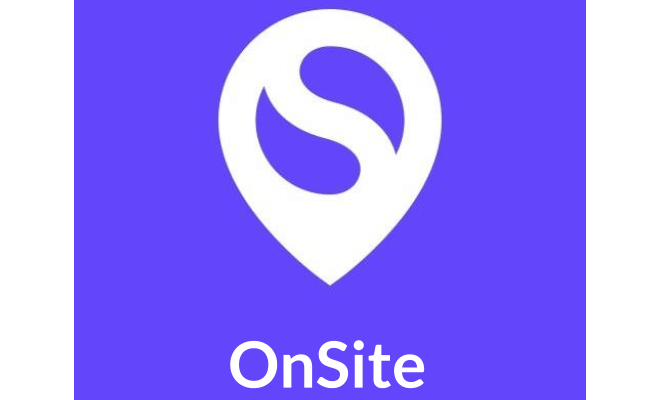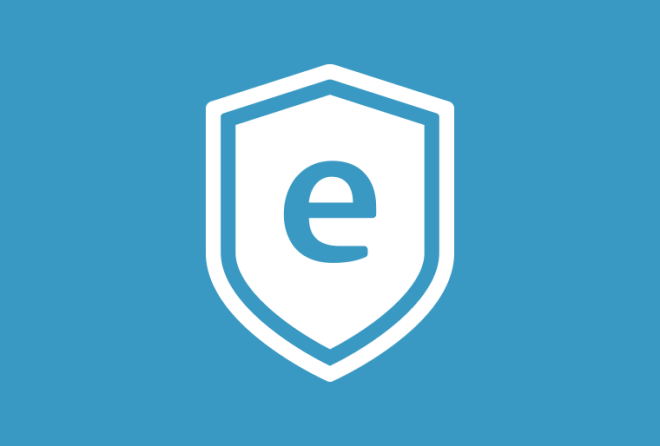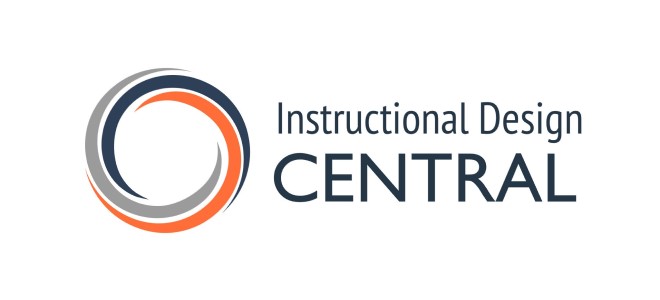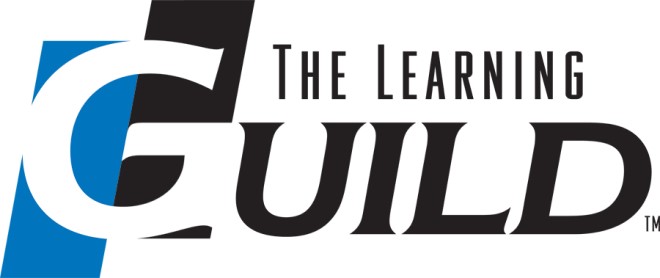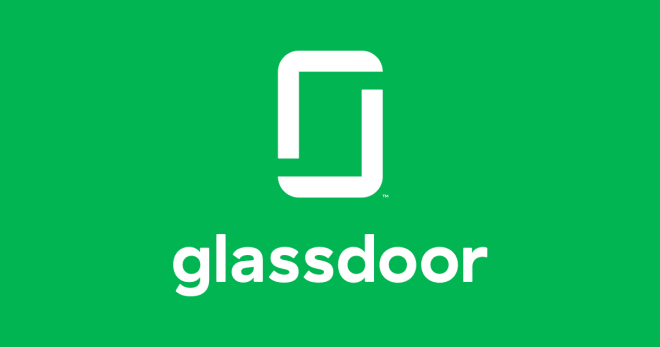Instructional designers are some of the most in-demand workers in higher education, according to Inside Higher Ed. The Bureau of Labor Statistics also expects the ID job market to grow faster than the average for all other occupations over the next decade.
With a solid salary and plenty of career path opportunities for advancement, there’s a lot to look forward to if you’re pursuing an instructional design career.
But, despite all of the potential benefits that come with working in the industry, finding instructional design jobs can be a challenge if you don’t know where to look. The jobs are certainly out there, but you just have to know where to find them.
As someone who’s been in the industry for about 20 years, I know exactly where to find jobs as an instructional designer. With dozens of years of finding clients and jobs for myself and many of my readers, I can tell you which sites are worth your time and which ones you should avoid.
In the guide below, I’ve put together a list of 26 of the very best places to find high-quality instructional design jobs of all types: entry-level, advanced, remote, in-person…you name it. From big-name job boards like Fiverr, Monster, and Indeed to niche higher ed-specific sites like eLearning Industry and Instructional Design Central, this list has it all.
Instructional Designer Job Resources
Here are the best job platforms organized by freelance systems, sites that focus on eLearning pros, niche instructional design job sites, and general job boards.
Freelance systems →
1. Fiverr →
2. Freelancer →
3. Upwork →
4. Golance →
5. Guru →
6. OnSite →
7. People Per Hour →
8. Work Hoppers →
eLearning Career Databases →
9. eLearning Industry →
10. eLearning Heroes →
Instructional Designer Focused Databases →
11. Instructional Design Central →
12. International Society for Performance Improvement (ISPI) Jobs →
13. ATD Job Bank →
14. Learning Guild →
15. Higher Ed Jobs →
16. Inside Higher Ed →
General Job Boards →
17. FlexJobs →
18. Craigslist →
19. Job.com →
20. Careerbuilder →
21. Glassdoor →
22. Indeed →
23. Monster →
24. The Ladder →
25. The Muse →
26. ZipRecruiter →
Sites to Find Freelance Instructional Design Jobs
Here are the top freelance systems used by the “gig” economy workers to find projects to do in instructional design.
1. Fiverr →
Fiverr is a terrific place to find freelance work and other freelancers if you have a team project. This system was named Fiverr because many simple jobs can be accomplished for a payment of only $5 on this system. But don’t let that fool you, the pay isn’t usually limited to such small amounts. Freelancers join this system to advertise their skills and respond to requests for proposals that come from clients who need work done.
A search for “instructional designer” turns up about 300 freelancers who have skills in this general design area and who offer their services on Fiverr. The system considers designing an instructional manual for a product to be in the category of instructional design, so it is a bit off the mark when you want to focus only on eLearning and educational materials for virtual classrooms.
You will find many freelancers from developing countries on this system who offer their services for a very low price. If you are just starting, or while learning about instructional design, you can use this system to pick up some extra money. However, it is not the place to find a career position in instructional design.
Fiverr charges the service purchaser a 5.5% service fee on the purchase amount. If your job pays under $75, an additional $2.50 small order fee will be applied. The service providers (freelancers) on Fiverr do not pay any fees.
2. Freelancer →
This is a system where those who wish to hire freelancers post a project. The pay offered for the projects may be a fixed price or at a rate per hour of work. The freelancers who use this system make a proposal in response to the projects offered. Members can chat with the clients who posted the project in real time. The one who posts the project has control over when the payment is released. Payment can be released as project goals are met (milestone payments) or on project completion. This choice is made by the client who posts the project.
I will point out that having the client with the sole authority to release payment is problematic if the instructions are confusing or incomplete and the client is difficult to satisfy. If you use this system be careful that you only work on projects with clear instructions and explicitly-defined project deliverables.
Freelancer charges a percentage of the successful projects you win and complete, which is a 10% fee (minimum $5).
3. Upwork →
Upwork is a competitor to Freelancer. Skilled professionals, who like to work independently, find plenty of work to do on this system. They offer their skills at the hourly rate they choose. From what I’ve seen, instructional designers on this Upwork charge between $25 to $100 per hour. On this system, you will find professionals with skills in lesson plan writing, curriculum development, eLearning design, training program development, employee onboarding, and learning management systems.
Upwork charges a percentage of the successful projects you win and complete. This is a 10% service fee on the total amount you billed the client. Upwork also offers premium memberships and subscription services with more benefits than standard members receive.
Learn more: You can see some examples of the skills that clients see when hunting for an instructional designer. These freelancers are the ones you will compete with, to win the projects on the Upwork system.
4. goLance →
Freelancers set up a profile on this system and give their hourly rate. You will see the rates from all over the world. The rates for workers from developing countries will be very low ($4 per hour), while freelancers from developed countries like the USA or the UK charge up to $80 per hour for instructional design services.
If you want to work from home and are comfortable with being on the clock, this is a good place to find projects to work on. Be aware that this system tracks your work by constantly spying on you using software that you download and run on your computer. You sign in and the system is constantly taking screenshots of what you are doing to make sure you are working on the client’s project when signed in. To succeed, you need to be focused on doing one job at a time during each work session.
In the past, goLance charged freelancers a 7.95% service fee, but they’ve recently switched to a sliding scale fee structure that’s a little more complicated. You can read about it here.
5. Guru →
Guru is a popular system with over one million freelancers offering their services. A search for “instructional design” shows over 21,000 results with freelancers charging from $10 to $100 per hour. It also shows the total past earnings of the freelancers so you can see how busy they are and how much money they made this year.
You can work as an individual freelancer on this system or as part of a team freelance group if you are a small business providing the services. One freelance group of eLearning system developers is shown as having earned nearly $300,000 on the Guru system during a recent year.
You can find projects on this system that pay well. When starting on this system as a newbie, it is a bit challenging to get the experience and win projects because you are competing against the top experts on Guru. However, if you land some projects, and build up a client base on this system, you will have a steady workflow.
The commission fee on Guru is 9% for a standard free account. If you join as a member and pay a monthly membership fee, this commission fee is lowered depending on the plan you choose.
6. OnSite →
This is a UK-based system. Freelancers and job seekers have to apply to be approved. This is a matching service for job seekers and recruiters. It is the online equivalent of a “head hunter” talent agency. The recruiters pay the system if they hire any of the job seekers that are approved for participation in the system.
Only about 20% of the applicants are invited to join. The membership is free but requires an invitation to join. You get an invitation by giving a link to your online portfolio with examples of your work. The turnaround time for the approval of applicants is 48 hours.
7. People Per Hour →
This system is used by freelancers who are available to be hired by the hour or by the project. A search for “instructional design” turns up about 80 freelancers on this system with those skills. The hourly rates range from a low of $8 per hour for a person with basic instructional design skills to $100 per hour for a highly-certified specialist with a Master’s degree.
This system is very popular with clients who post many projects because they pay a one-time fee of $265 to become a member. Then, they can post all the projects that they want. The freelancers pay a 20% commission fee for the first $350 they earn from a single client, then a 7.5% commission fee up to $7,000 from the same client, and thereafter a 3.5% fee on any lifetime earnings from the same client that is over the $7,000 threshold.
The best way to use this system is to find a client that has many projects. Work for the same client until you meet the threshold to lower your commission rate to 3.5%. The result of this strategy is you get a raise for the work you do for that same client thereafter.
8. Work Hoppers →
This freelance system is free for the freelancers and you set your rate. There is no commission deducted from your pay. You negotiate directly with the client, setting the pay rate by the hour or by the project.
The client pays a monthly advertising fee of $39 for one job listing, $199 per month for multiple job listings, and $389 per month for the enterprise edition for multiple job listings. As soon as the job is filled, the advertising can be canceled.
Since this is a free service for the workers, unlike the other freelance systems that charge a commission, I highly recommend you give it a try. However, all the client relations and the responsibility for collecting the invoice due from the client is your duty. Many clients are not good at paying their bills. To use this system effectively, you have to know how to deal with clients effectively with both your project work and also payment collection.
eLearning Career Databases
The career databases focus more on educators and instructional designers.
9. eLearning Industry →
A search on this eLearning job database produced about 50 excellent choices of positions in instructional design. This is an important system to check for those who have many years of experience in instructional design and want a top-level position. For example, the minimum work experience for the best positions is eight or nine years. Senior-level instructional designers can get paid extremely well and may work from their home office.
This is a good system to check for jobs in non-US locations. Many countries have special work-visa programs for instructional designers due to the lack of a sufficient number of qualified candidates in their countries. Other non-US companies allow working from a remote location, so there is no need to limit your job search to where you live if you are willing to work remotely.
10. eLearning Heroes →
You may find jobs listed here that are not advertised elsewhere. There are not that many listings (less than 40); however, they are from good sources. In addition to being a resource to check when looking for a job, this is a community of your peers in eLearning. You can get excellent career advice and build up a support network of those working in this field. Strike up a conversation by reading and responding to the community posts on the forum.
Learn more: On this system, there is an interesting recent article about the status of the eLearning profession that is helpful. It is entitled 3 Big Reasons Why Now Is a Good Time to Be an E-Learning Pro.
Instructional Designer-Focused Job Sites
These are very specific websites for instructional designers.
11. Instructional Design Central →
This website focuses exclusively on instructional designers. It usually has about 25 to 50 job listings from businesses, non-profits, government agencies, and academia.
Learn more: It is helpful for your professional development to participate in the international community of instructional designers. Here is the resource page that gives the links of how to connect to the Instructional Design Central (IDC) community on various social media.
12. ISPI Jobs →
This system has a few instructional designer jobs (under ten) and occasionally has positions for interns in this field, which can help those who no job history to get some experience while going to school to become certified. If you register for a job seeker account, you can also post your resume on this website to help employers find you.
13. ATD Job Bank →
The ATD Job bank focuses on job openings in the field of training and development. When I searched on the system, there were over 700 job listings for instructional designers. They offer a nice service on how to improve your résumé with a free review.
This system offers education courses that lead to getting your ATD certification using a new Talent Development Capability Model. You can choose to join the community of more than 36,000 professionals in talent development, by paying for an annual membership.
Learn More: Find out about the ATD certification program.
14. Learning Guild →
The Learning Guild is a professional association of eLearning professionals. Membership is free. This is a good group to join for personal networking with others in the same field. Networking among professionals in instructional design may allow you to find out about a position that is becoming available, which is not advertised.
Learn More: There are many resources in the library on the subject of instructional design.
15. Higher Ed Jobs →
A search on this system showed close to 200 open positions for instructional designers. These are job listings for working in higher education such as four-year universities and colleges, and two-year community colleges.
Most of the positions offered on this system require on-site work with only a few allowing remote work. These are brick and mortar educational facilities that are hiring staff to work at their physical locations. The listings are heavily-weighted toward advanced degree programs. To qualify for these jobs, instructional designers should be comfortable and experienced working at a high-level in the educational system with a Master’s degree required for most of these jobs.
16. Inside Higher Ed →
Inside Higher Ed is a popular resource for all who are involved in higher education including educators, administrators, and institutions. The website has over 3.5 million monthly readers and offers a subscription service. It has a free, searchable job database to search for positions. Using the keywords of “instructional design” turns up over 6,000 positions listed, which range from leading instructional designer positions to recruiting educators with instructional design skills.
You can set the parameters of where you are looking for a position at the city/state level and give a range of 20 to 100 miles to search from a specific location. After you conduct a free search, you can easily set up email reminders for new job listings that meet your criteria. If you find a position of interest you can apply online through the website or by using the links provided in the job listing.
General Job Boards
These general job boards have millions of job listings. They are very useful to compare job offerings for instructional designers in various locations across America. If you can relocate, you can get a terrific, high-paying job in many places that desperately need instructional designers.
17. FlexJobs →
This job listing system requires a paid membership. There is a 14-day trial available at the time of this writing for $2.95. Membership is $23.95 per month or $71.40 per year if you pay for a year in advance.
Flex Jobs specializes in flexible jobs, which may include some in-person work mixed with remote work, remote-only work, and work-from-home opportunities. Project work, contract work, part-time jobs, and full-time employment offers are available for consideration. You can search by keywords and location. You can filter the search by the level of remote work you wish to find.
A search for “instructional designer” gave more than 3,500 results from the database of 100,000+ jobs. About 40% of the jobs offered are completely remote work, 10% of the jobs offered are remote during the pandemic, 20% are partially remote work, 25% offer remote work options, and 5% are on-site work.
If you filter the search by the “Education & Training” category you will be able to drill down to the specific instructional designer positions. When I searched, I found about 300 open positions. Many are interesting including some looking for a professor to teach instructional design.
18. Craigslist →
Craigslist existed since before the Internet was popularized. It started as an online bulletin board system. It has been useful for more than 25 years since its inception. It is a popular free-to-use, online, classified ad system, where you can read the jobs offered and make a “job wanted” posting.
Craigslist does little to remove fraudsters and scammers so be very careful if you use this system. Do not do a lot of project work for clients who you do not know. Ask for milestone payments to limit your risk of not being paid.
19. Job.com →
Job seekers do not pay to use this system. The recruiters and employers who post job listings on the system pay if they hire you. You must have a resume to be able to use the Job.com system. Job placement is based on an algorithmic analysis of your resume. If you do not already have a great instructional design resume, make sure you do before you register and try to use this system. Hire a professional resume writer, if need be, to help you.
Job.com often has a promo going where they will give you a 5% signing bonus for every job you get hired for that is found through this system. The signing bonus is paid 90 days after you start work and continue in good standing at your new employer.
20. CareerBuilder →
CareerBuilder lives up to its name. I searched for “instructional designer” and found almost 300 exciting positions in the USA that are looking for someone right now. After you register, you set up your profile information in this system with your background information. Many of the advertised positions have an Easy Apply feature. All you have to do is click on it. Registered members can have job search alerts sent to your email address automatically. Registrations for job seekers on this system are free. The job positions are paid for by the recruiters to list them.
This system has a very helpful warning that applies to any online job system. It warns never to give your social security number to a prospective employer, provide a credit card number, give your bank account information, or conduct any sort of monetary transaction. Many scammers use these systems to offer fake jobs just to steal personal information. Verify who you are applying with by calling the company, checking their phone number with the Better Business Bureau, and doing a background check. Conduct any necessary due diligence on them to make sure the company is legitimate.
21. Glassdoor →
The uniqueness of this system is that not only do you find wonderful job listings, you also see the feedback about how it is to work at the company. Feedback comes from the people who already work there or used to work there. They can give feedback anonymously. This is helpful. If you are building a career and want to make sure each step is beneficial, having this “insider” information is invaluable.
Stay away from a company that has a poor rating on Glass Door because it will likely be a nightmare to work there. Another nice tool is the salary estimator and comparison tool. Use this tool to see if a salary offered is competitive with other jobs in the same field in a similar area, at the same level of expertise and experience.
22. Indeed →
Using the Indeed system is encouraging for instructional designers. The search returned over 6,500 job opportunities for instructional designers in the United States. That is truly amazing.
The first one I saw listed, offers an annual salary of $62,000 with the full benefits of paid vacation time, paid sick leave, and health care insurance. This opposition would be working as an instructional designer for a healthcare training company. The hiring need is listed as urgent. You would win this job today if you have the qualifications. The company only requires you to have a degree with certification in instructional design and have completed two projects in this field that you can show to the employer. And, you can work remotely.
If that does not appeal to you, many projects pay $80 per hour. This rate of $80 per hour is the equivalent of earning $160,000 a year for working 40 hours per week for 50 weeks a year. Are you getting excited about your career of becoming an instructional designer now? You
should be.
Learn more: Take a look at the search results for instructional design to see what you can find. Then, upload your résumé to find a nice position to apply for and you will be on your way to success.
23. Monster →
Monster is one of the largest job-listing websites with millions of job openings advertised. The search on Monster for instructional designer jobs that I performed, returned more than 2,200 job openings across America for a person with these skills.
It was nice to see positions advertised that are for a junior instructional designer that is certified with a Bachelor’s degree in instructional design but has minimal or no work experience. These entry-level positions pay around $45,000 to $55,000 per year. After three years, you can expect to earn $85,000 to $100,000 annually as a senior Curriculum Instructional Designer.
24. The Ladders →
Feeling pretty excited about your job experience as an instructional designer? Do you have more than three years of experience at a senior level? Why not try to see if you qualify for the positions listed on The Ladders. All the positions on this system pay over $100,000 per year.
If you already have a Facebook or Google account you can search for jobs on the website by using one-click to log in. If you do not have either of those accounts, you can register by using your email address.
The Ladders is a system used by recruiters to fill senior-level executive positions. If you are already employed, you can search the system to see what other positions might be available for a lateral career move that increases your pay.
25. The Muse →
The search I did on The Muse for “industrial designer” turned up about a hundred terrific positions to choose from that are very attractive. Some examples are Amazon is hiring for locations all over the country and all the big names in technology such as Facebook and Google are hiring instructional designers also.
The abundance of positions offered at the top companies shows how high the demand is for the workers who have these skills and certifications.
Here are the important qualifications required by Amazon so you can get an idea of what is needed to get the highest-paid positions:
- You must have a Master’s-level degree in instructional design or a related field.
- You must have certification in instructional design, curriculum development, project management, and content-special certifications such as PMP, CPLP, and CPT certifications are required.
- You must have experience with learning management system (LMS) architecture and system deployment.
26. ZipRecruiter →
ZipRecruiter considers an instructional designer as part of the general category of a designer. There are so many designer jobs of various types. The search I performed returned over 60,000 designer jobs in the USA. Then, when I used the filter of job title and selected “instructional designer,” it showed 93 job openings. That is how to drill down in this system to find the job listings you want to see.
The jobs listed in this system are high-level. They include positions offered by universities and scientific companies. There are some nice positions offered in beautiful locations such as Scottsdale, Arizona for an annual salary of $75,000 and Silicon Valley, California for $85,000 per year. These positions require three years of experience.
Useful Resources
- What is instructional design?
- How to Become an Instructional Designer
- The Best Instructional Design Courses Online
- Instructional Design Masters Programs
- How to Write an Instructional Design Cover Letter
- How to Land Your First Instructional Design Job
- How to Create an Instructional Design Document
- The Most Important Instructional Design Principles
A Final Word on Finding Instructional Design Jobs
As I said in the beginning, the field of instructional design is growing exponentially. Many amazing jobs remain unfilled because of the excessive demand for instructional designers.
I look forward to seeing your career success!
Still have questions about finding instructional design jobs? Have a tip you’d like to share? Let us know by leaving a comment below.
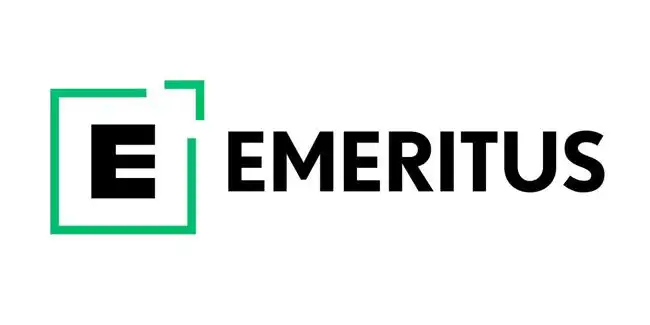 Emeritus Professional Instructional Design Certificate | Online Certificate Course
Emeritus Professional Instructional Design Certificate | Online Certificate Course
Gain firsthand expertise in instructional design principles and methodologies through this unique Professional Certificate program. Create impactful learning solutions and improve people's ability to learn.
The next class kicks off on October 22, 2024, so don't miss your chance to enroll now! Take advantage of early bird discounts leading up to the kickoff date:
20% off until September 3
15% off until September 24
10% off until October 15








